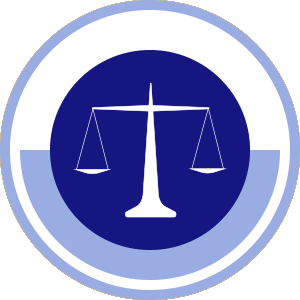Free Bible in english
The name Bible comes from the ancient Greek βιβλία which translates as 'books'. This is because the Bible, also known as the Holy Scriptures, is made up of the most important collection of religious books or texts of Judaism and Christianity, and thus the cradle of Western civilization.
The Holy Bible
The texts of the Bible are divinely inspired, and it is for this reason that we often refer to it as the Holy Bible, Holy Scriptures, Holy Bible or Holy Texts. The term Holy Bible first appeared in the Middle Ages. One of the earliest, if not the first, use of the English term "Holy Bible" appeared in 1611 on the title page of the Authorized Version, known in the U.S. as the King James Version. The word holy or sacred has several meanings and, as we shall see, all describe the Word of God.
The meaning of sacred is "That is dedicated to a divinity or to its worship or that is related to this divinity, to religion or to its mysteries." in its first meaning and "That deserves exceptional respect and cannot be offended" in the second. When God spoke to Moses through the burning bush, He asked him to take off his sandals because he was standing on "holy ground" or "sacred ground", that is, ground sanctified by the presence of God. Because of the very essence of God, his word is holy. Likewise, the words God gave to Moses on Mount Sinai were also sacred, as are all the words God gave to mankind throughout the texts of the Bible. Since God is perfect, His words are also perfect (Psalm 19:8). The commandments of the Lord are just and pure, so is His Word (Psalms 9-10).
The Bible is also Holy because it was written by men who were under the guidance and influence of the Holy Spirit. "For all Scripture is given by inspiration of God, and is profitable for doctrine, for correction, for instruction in righteousness, that the man of God may be perfect, equipped for every good work." (2 Timothy 3:16-17) . The Greek word that translated means 'inspired by God' is Theopneustos (θεόπνευστος). This comes from theos, meaning 'God' and pneo, meaning 'to exhale'. This would imply that the Bible does not in any case contain human opinions. No interpretation of God's words are found in the Holy Bible. This means that no apostle or prophet interpreted the words received by God in order to translate them later to the church. Thus, all the words that we find in the Scriptures were breathed through the mouth of God and what the Bible says is exactly what God thinks and desires. To put it more clearly and concisely: The same authority that God has, the Bible has.
Bible verses compared
-
 Genesis
Genesis -
 Exodus
Exodus -
 Leviticus
Leviticus -
 Numbers
Numbers -
 Deuteronomy
Deuteronomy -
 Joshua
Joshua -
 Judges
Judges -
 Ruth
Ruth -
 1 Samuel
1 Samuel -
 2 Samuel
2 Samuel -
 1 Kings
1 Kings -
 2 Kings
2 Kings -
 1 Chronicles
1 Chronicles -
 2 Chronicles
2 Chronicles -
 Ezra
Ezra -
 Nehemiah
Nehemiah -
 Esther
Esther -
 Job
Job -
 Psalms
Psalms -
 Proverbs
Proverbs -
 Ecclesiastes
Ecclesiastes -
 Song of Solomon
Song of Solomon -
 Isaiah
Isaiah -
 Jeremiah
Jeremiah -
 Lamentations
Lamentations -
 Ezekiel
Ezekiel -
 Daniel
Daniel -
 Hosea
Hosea -
 Joel
Joel -
 Amos
Amos -
 Obadiah
Obadiah -
 Jonah
Jonah -
 Micah
Micah -
 Nahum
Nahum -
 Habakkuk
Habakkuk -
 Zephaniah
Zephaniah -
 Haggai
Haggai -
 Zechariah
Zechariah -
 Malachi
Malachi -
 Matthew
Matthew -
 Mark
Mark -
 Luke
Luke -
 John
John -
 Acts
Acts -
 Romans
Romans -
 1 Corinthians
1 Corinthians -
 2 Corinthians
2 Corinthians -
 Galatians
Galatians -
 Ephesians
Ephesians -
 Philippians
Philippians -
 Colossians
Colossians -
 1 Thessalonians
1 Thessalonians -
 2 Thessalonians
2 Thessalonians -
 1 Timothy
1 Timothy -
 2 Timothy
2 Timothy -
 Titus
Titus -
 Philemon
Philemon -
 Hebrews
Hebrews -
 James
James -
 1 Peter
1 Peter -
 2 Peter
2 Peter -
 1 John
1 John -
 2 John
2 John -
 3 John
3 John -
 Jude
Jude -
 Revelation
Revelation
The Bible of Judaism
The Bible of Judaism is the three-part Tanakh, consisting of the Torah (instruction), the Nevi'im (prophets) and Ketuvim (writings). While the Torah was given by God to Moses at Sinai according to his own testimony, and some of its texts were also written by Moses himself, this is different from a historical perspective. In Israel a culture of writing developed from a previous culture of oral tradition, and it was not until the Hellenistic and Roman times that a large part of the population had the opportunity to read the biblical texts and thus learn them. Some of the early Jewish literature was included in the canon of the Jewish Bible, but other writings were not.
While this process was still underway, Christianity emerged and from the beginning referred to the scriptures of Israel. Jesus of Nazareth interpreted his work in the light of these texts, and the early Christian community saw these writings fulfilled through the resurrection of Jesus Christ. Christianity thus appropriated the Scriptures of Israel and other early Jewish literature, such as the Old Testament. In turn, it also created its own texts, some of which acquired binding importance and were eventually added to the Old Testament. This became known as the New Testament, thus forming the original Christian bible.
The Christian Bible
The Christian Bible is the most printed and published written work in the world and translated into most languages.
The neuter βιβλίον biblíon "book" is a diminutive of βίβλος bíblos "book", named after the Phoenician port city of Byblos, also called Gibello, Gibelletto or Jebail, 30 km from present-day Beirut. Situated on a hill, it was called Gubla in cuneiform texts and Gebal in the Bible. Today, it is widely recognized as the oldest continuously inhabited city in the world.
In antiquity, the port city of Byblos was an important Mediterranean trading post, excelling in the papyrus market. The plural of βιβλίον (biblíon) is βιβλία (bible), i.e. 'papyri, books'. In the Septuagint , βιβλία (biblíon) was primarily a reverential designation for the Torah. John Chrysostom was the first to use this plural to designate the entirety of the Christian scriptures (Old and New Testaments).
The use of the term Bible
In ecclesiastical Latin , the term biblia was first understood as the neuter plural biblia, -orum , but since about 1000 AD it has been understood as the feminine singular biblia, -ae. National languages adopted the word in the singular; in English it became Biblia. The name indicates: What we hold in our hands today as a single volume and what we understand as a unity, the Bible is actually a multiplicity. The designation of The Holy Bible as the 'book of books' is thus both on the religious side, expressing the meaning of the Bible, and on the other hand, the inner plurality of books that form it.
Even after the codex replaced the scroll as the book form, all biblical writings were rarely combined into a single book; the rule was that the Bible existed as a collection of multi-part books on a shelf, say in the scriptorium of a monastery, as illustrated in the Codex Amiatinus of the early eighth century in Northumbria. The fact that a single book contained almost the entire Jewish or Christian Bible only became common practice with the advent of the printing press.
The Bible as 'Holy Scripture'
The New Testament often refers to the Holy Scriptures of Judaism with the expression αἱ γραφαί hai graphaí 'the Holy Scriptures' and thus follows Jewish-Hellenistic usage. Paul of Tarsus also uses the form γραφαί ἅγιαι graphaí hágiai 'Holy Scriptures' ( Rom 1:2 EU ). In the New Testament, the singular γραφή graphḗ "the Scriptures" often refers to a single sentence (in modern terms: a Bible passage), but also to the Jewish scriptures as a unit; this also has parallels in Judaism, for example in Philo of Alexandria and Chronicles. This usage continued in the early church; the entirety of the books of the Old and New Testament are also referred to as 'Holy Scriptures'.
Old and New Testament
The fact that the two parts of the Christian Bible are called Old and New Testament goes back to Paul of Tarsus, who contrasted an old and a new 'covenant'. The old covenant is represented by the Torah of Moses ( 2 Cor 3:5-15 EU ). Paul saw himself as a servant of the new covenant, mediated by Christ and made present in the celebration of Holy Communion ( 1 Cor 11,25 EU ). In Hebrews, an anonymous Christian author explains how the new covenant replaces the old. Always by 'Covenant' (in ancient Greek διαθήκη diathḗkē and in Latin: testamentum) he meant an agreement and not a book or a collection of writings.
The Bible and the Old Testament
Around AD 180, Melito von Sardis coined the term "books of the Old Covenant" for the first part of the Christian Bible and at the same time presented a list of the writings referred to. He reported this in a letter to his brother Onesimus, which was preserved in the extract of Eusebius of Caesarea :
"Since I traveled to the East and came to the place of sermons and deeds and made detailed inquiries about the books of the old covenant, I will share the books with you below. The names of them are: the five books of Moses, namely Genesis, Exodus, Numbers, Leviticus and Deuteronomy, (also) Jesus son of Nave, Judges, Ruth, four books of kingship, two Paralipomena, the Psalms of David, Proverbs of Solomon, or Wisdom, Ecclesiastes, The Song of Songs, Job , The Prophets Isaiah and Jeremiah, The Twelve Prophets, Daniel, Ezekiel, Ezra."
It is striking that Melito does not name the book of Esther, nor the deutero-canonical writings , that is, Jewish writings found in the Septuagint but not in the Tanakh: Book of Judith, Book of Tobit, 1st Maccabees, 2nd Maccabees, Baruch, Wisdom of Solomon and Jesus Sirach. The recognition of these books as Holy Scriptures was very hesitant in Christianity: in the Latin West around the year 400, in the East only in the 7th century. In general, it was a rather controversial issue. The fact that Tobit, Jesus Sirach and the Book of Wisdom were popular as religious devotional literature and could also be used to teach new Christians may have played a role.
In the late 20th century, Christian theologians suggested abandoning the term 'Old Testament' because it sounded derogatory and speaking instead of the 'First Testament'. Among these theologians were Erich Zenger and JA Sanders. This coining of the term could not gain general acceptance, especially since antiquity generally valued the old as superior to the new.
How the Bible is quoted
The Bible is not cited by author, edition or page number, but by book, chapter and verse. This has the advantage that different translations of the Bible can be compared. In addition, the reader can use this method to compare his translation and the text of the Hebrew or Greek Bible. In the same way it is possible to compare the same verse in the different existing versions of the Bible. This can be done on this page using the Bible verse comparator.
Special features when quoting the Bible
- The Book of Psalms is a compilation of individual poems. The 150 chapters of this book are called Psalms : Ps 23, 2 is therefore "Psalm 23, verse 2" and not "Psalm, chapter 23, verse 2".
- The shorter books of the Bible ( Book of Obadiah , Epistle to Philemon , 2nd Epistle of John , 3rd Epistle of John , Jude ) have no chapters and are only cited with the indication of the verse.
- The Book of Esther is based on a mixed Greek-Hebrew text in the standard Roman Catholic translation, while Protestant Bibles contain only the translation of the Hebrew text of the Book of Esther. Excesses in the Greek text are not counted as separate verses in the standard translation, but are indicated by lowercase Latin letters. In the Luther Bible, these excesses are listed as passages of the Book of Esther in the Apocrypha (Old Testament Appendix); individual sections of the text are labeled A through F and subdivided according to verse numbers. Therefore, these designation systems are not compatible with each other.
- In the Luther Bible, the apocryphal book of Jesus Sirach had a numbering that differed from that of other editions of the Bible; however, since the 2017 revision, the Luther Bible has adopted the chapter and verse numbering of the standard translation.
- The copyists of the Hebrew Bible developed a system of sections and verses in order to secure the text: each section began with a new line. When further subdivision was necessary, a blank space was left within the line. This division has also been marked by the Hebrew letters פ and ס in the text since the late Middle Ages. In parallel, a division of the text into verses (marked by Sof pasuq ) emerged. The verse count itself comes from the tradition of the Vulgate . After Stephan Langton made the chapter division common today in the 13th century, the Paris printer Robert Estienne numbered chapters and verses in his editions of the Bible in the 16th century.
The Biblical Canon
The Greek term "canon" means "guide" or "standard". Within Christian theology, since the fourth century AD, there has been a development in the importance of the rules of faith toward delimited collections of religious books. Such terminology is anachronistic for Judaism before the destruction of the Temple in Jerusalem, because at that time sacrificial worship was the center of religious life. In the Diaspora, synagogue services provided a substitute for temple visits, which were rarely possible; these services consisted of prayer and reading from the Torah and the books of the prophets. Flavius Josephus explained that in Judaism there are 22 books of Holy Scripture, corresponding to the number of letters of the Hebrew alphabet:
"Not [are there] among us thousands of books which disagree and contradict each other, but not more than twenty-two books, which contain the record of the whole period and have justly found confidence. And of these five are Moses', comprising the laws and tradition from the origin of mankind to his own end; this period is only a little shorter than three thousand years. From the death of Moses to the reign of Artaxerxes, king of the Persians after Xerxes, the prophets after Moses recorded the events of their time in thirteen books; the other four contain hymns to God and instructions of life for the people."
- Flavius Josephus: Against Apion 1,38-40.
The fourth book of Ezra counts 24 books, double the number of the twelve tribes of Israel or the months. These were scriptures that were considered divinely inspired and particularly authoritative. But it makes sense to distinguish between the status of a book as scripture and its actual importance in the life of a community of faith, that is, between a core of very significant scriptures and a gray area around them.
Thus, the "canon" of Scripture is defined as the books that make up the Bible and are officially accepted. It was considered essential that a list be made of the books that reflected the truth of God's message and were inspired by the Holy Spirit, in other words, only those books that were truly considered to be 'breathed out by God' were accepted.
Even though each book was a canon in the eyes of God as it was written, the canon had to be identified as such by the religious leaders since God did not give a list of books to be included in the Bible. The determination of the canon was a difficult and sometimes controversial process carried out first by rabbis and Jewish scholars and later by early Christian leaders. Finally, thanks to God's inspiration, it was decided which books belonged to the biblical canon.
The complete canon of the Old Testament was compiled after the destruction of Jerusalem in 70 AD, although the parts had already been recognized long before. We find that the Books of the Law (also known as the Torah or Pentateuch-Genesis-Deuteronomy) were recognized as early as 2 Kings 22. The prophets were identified as Scripture at the end of the 2nd century BC. The Psalms were accepted, but the rest of the books varied, depending on the Jewish sect.
The rabbinical school of the Pharisees, with its final list of twenty-four books, made the equivalent of the thirty-nine books of the Christian Old Testament. Ten books interpreted in the Septuagint (the Greek translation of the Hebrew Scriptures) were rejected because of the strict guidelines for the canon: the books had to have conformed to the Torah, and they had to have been written in Palestine, in Hebrew and not after the time of Ezra (around 400 BC).
Although the Catholic Bible today includes the apocryphal books, the vast majority of Hebrew scholars considered them to be good historical and religious documents, but not on the same level as the divinely inspired Hebrew Scriptures. The Dead Sea Scrolls, discovered in 1947, have some minor differences, but are remarkably similar to today's accepted Hebrew Scriptures.
The process that took place to recognize and assemble the books of the New Testament began in the first centuries of the Christian church. Soon, some of the New Testament books were recognized as inspired by the Holy Spirit. Paul considered the scriptures of Luke to have as much divine authority as the Old Testament (1 Timothy 5:18, see also Deuteronomy 25:4 and Luke 10:7). Peter referred to Paul's writings as Scripture (2 Peter 3:15-16). Clement of Rome mentioned at least eight books of the New Testament (95 AD). Ignatius of Antioch recognized seven books (115 AD). Polycarp, a disciple of John the apostle, acknowledged fifteen books (108 AD). Later, Irenaeus mentioned twenty-one books (185 AD). Hippolytus recognized twenty-two books (170-235 AD).
The first canon is considered to be the Canon of Muratoria, compiled in 170 AD. It included all the books of the New Testament, except Hebrews, James and 3 John. At the Council of Laodicea (363 AD) it was agreed that only the Old Testament, together with the apocryphal books and the twenty-seven books of the New Testament were to be read in the churches. Subsequently, the Councils of Hippo (393 AD) and Carthage (397 AD) reaffirmed the same twenty-seven books.
The principles used by the various councils as a way of determining whether a New Testament book had been truly inspired by the Holy Spirit were fourfold. First, the author had to be an apostle or have a close connection with an apostle. Second, the book had to have been accepted by the body of Christ at large. Thirdly, the book had to contain consistency of doctrine and orthodox teaching. Finally, the book had to show clear evidence of high moral and spiritual values, which would reflect a work of the Holy Spirit as the divine Author of the book. The essential point, however, was that it should be recognized that it was God, and God alone, who determined which books should belong to the Bible. God, through the Spirit, imparted to His followers what He had already decided. God, in His sovereignty, and in spite of the limitations of sinful man, was the one who would lead the early church to the recognition of the books that He had inspired, and those books are recognized today as the canon of the Scriptures.
Normative claim as "Word of God"
Most schools of Christianity teach that the biblical tradition was directed and inspired by God, i.e., its writers were moved by the Holy Spirit and preserved from making mistakes.
The theory of verbal inspiration has long prevailed in Catholicism and Lutheran orthodoxy. Some evangelicals equate the biblical text directly with God's revelation and therefore attribute an 'infallibility' to its wording. This view is often referred to as biblicism or biblical fundamentalism.
For all Christians, Jesus Christ, his person and work, is the authoritative center of the Bible, illuminating all the outer words. They regard his crucifixion and resurrection as a turning point in salvation history.
An analysis of the relationship between 'Bible' and 'Word of God' is based on the statements of the Bible and shows that the term 'Word of God' appears in the Bible in three ways: for prophetic statements, for the central message of salvation (i.e. the Gospel) and sometimes for Jesus Christ.
For Roman Catholics, the Bible only gains its authority as the Word of God through the teaching office of the Pope, who ultimately also established the canon of the Bible. For them, the overcoming of original sin through Jesus' vicarious atonement, and then the interaction of human effort and God's offer of grace is the central content of the Bible and the standard for its interpretation.
For Protestants, following Martin Luther, it is the gift of the grace of Jesus Christ without any action on their part. For liberal theology, it is the human model of the historical Jesus that confirms God's unlimited love. Evangelical denominations consider the whole Bible as the only norm of their faith, as norma normans; see also sola scriptura. The theologian Dietrich Kuessner formulates:
"In relation to the Bible, the confession is subordinate, a norm (normata) that has already been shaped by Scripture."
According to this, all expressions of faith, confessional writings and dogmas must be compared with the Bible and therefore must not contradict it. In the Catholic Church, the papal magisterium is the final and ultimate authority for interpreting Scripture; moreover, ecclesiastical tradition is often considered equal to the Bible. The evangelical church rejects this primary office and the strong position of tradition, since neither is based on the Bible. In fact, here there is no uniform teaching, since the interpretation of Scripture according to the Lutheran and Reformed confessions ultimately remains a matter of the Holy Spirit. This reveals the truth of God's Word to the individual conscience of the believer.
Bible translations
Since about the year 200, the Orthodox churches have used Bibles in the local language. The Latin Vulgate has remained authoritative for the Catholic Church since 400. Hieronymus had created it when Latin was still a common language. In the later Romance, Germanic and Celtic areas of Western Europe, the Bible continued to circulate almost exclusively in Latin.
The division of the text into chapters, which is common today in all editions of the Christian Bible and largely uniform, was introduced in the Vulgate by Stephen Langton , Archbishop of Canterbury, in 1205. The Parisian printer Robert Estienne divided the New Testament into verses in 1551, in a Greek and Latin edition of the Bible for the first time. Without the seven Deuterocanonical books, the Bible consists of 66 books with 1189 chapters and more than 31,150 verses.
In the 4th century, the Gothic bishop Wulfila, a follower of Arianism, translated the Bible into the Gothic language, which bears his name, the Wulfila Bible. Other translations of the Bible emerged in the late Middle Ages, including those of Petrus Valdes, John Wycliff, Jan Hus and William Tyndale. The Reformers in particular saw direct access to the Bible in the vernacular as essential to the Christian faith.
The invention of the printing press made a significant contribution to the accessibility of the Bible, and along with translations, allowed people to approach the Bible. The Bible became one of the most printed books in the world, and also one of the reasons why people's literacy began to grow, thus contributing to the development of culture among the popular classes.
There are numerous translations of the Bible. It is estimated that there are about 450 complete translations into languages and more than 2000 partial translations, making it the most translated book in history. Some of these translations of the Bible have been significant for the development of the languages and cultures in which they were given. In this way, the Bible has become not only a book to save the souls of human beings, but also a means to preserve different languages and democratize culture.
Versions of the Bible
Certainly, if we take into account the different translations, there are a great number of versions of the Bible. In addition, different versions have been made in the most widely spoken languages to adapt the texts both to the time and to the use to be given to the Bible, always under the careful observation of great connoisseurs of the texts and pious people, attentive to the dictates of the Holy Spirit to ensure that the words written in each of the versions maintain the infallibility of the Word of God.
In this website you will find the most important complete versions of the Bible. You can read the Bible for free, you can compare the different Bible verses with our Bible verse comparator, so you can observe the differences and similarities between versions, and you can soak in the Word of God to be a better Christian, and give rest and peace to your soul.